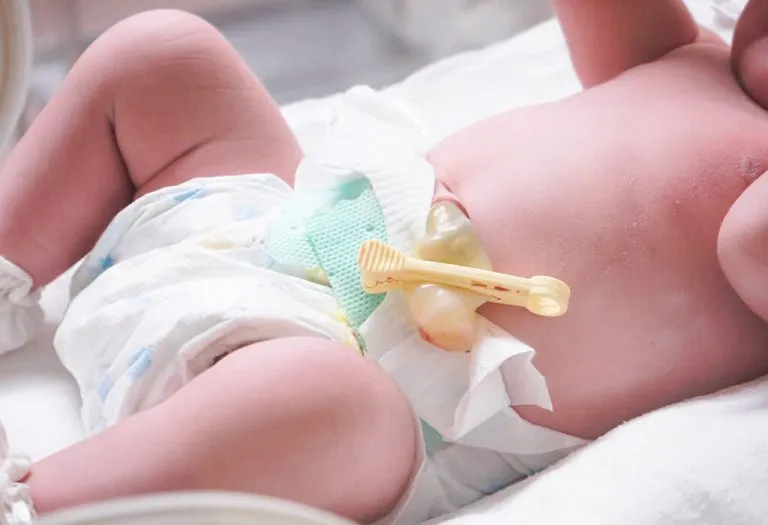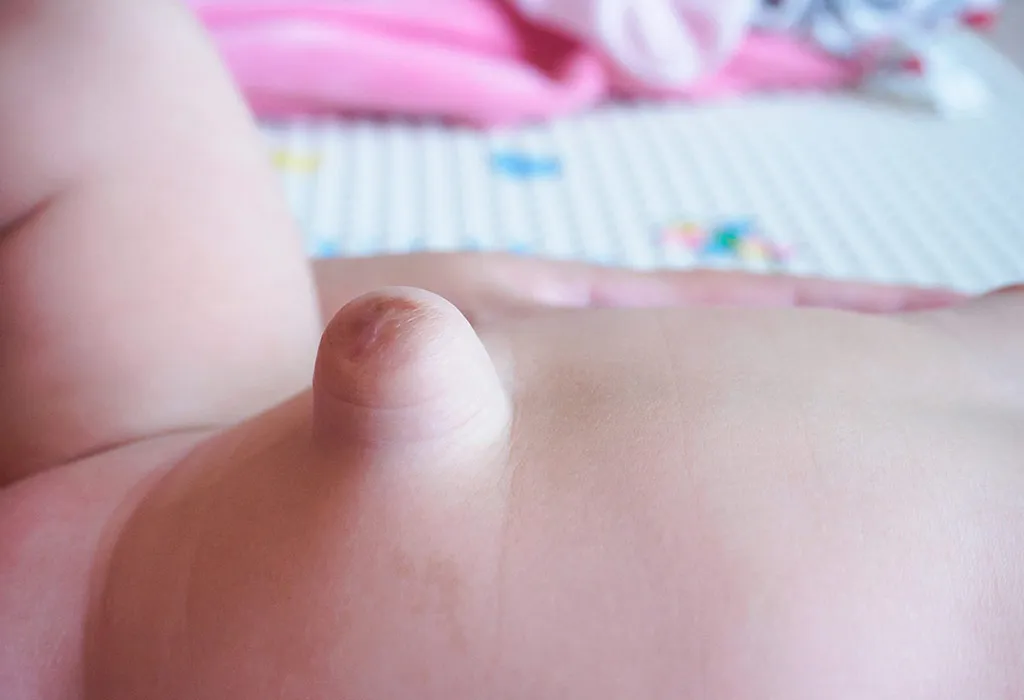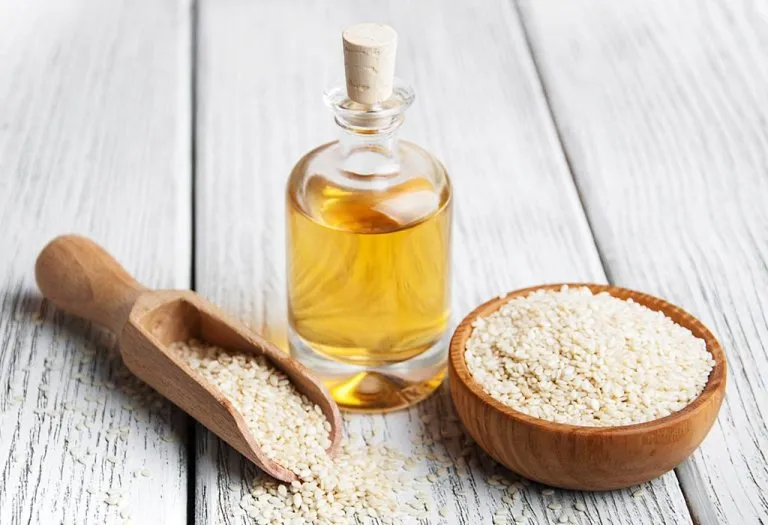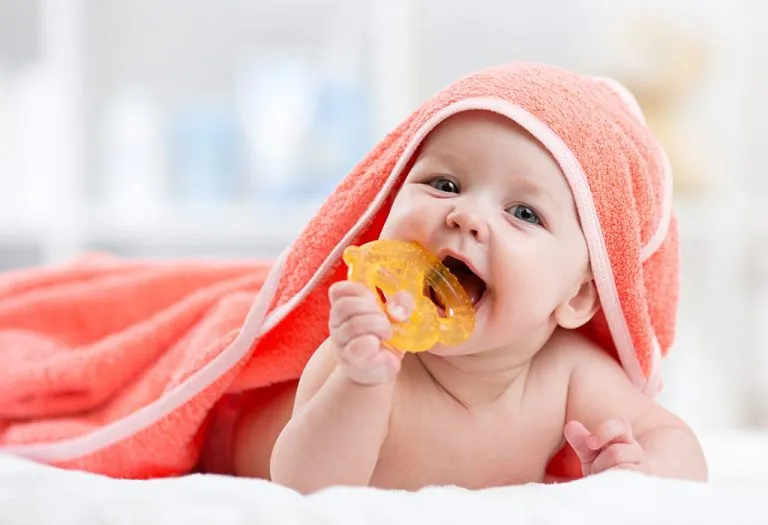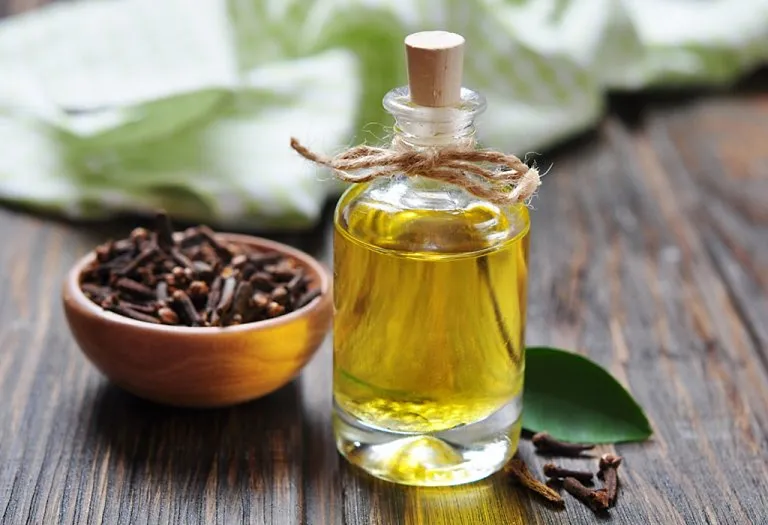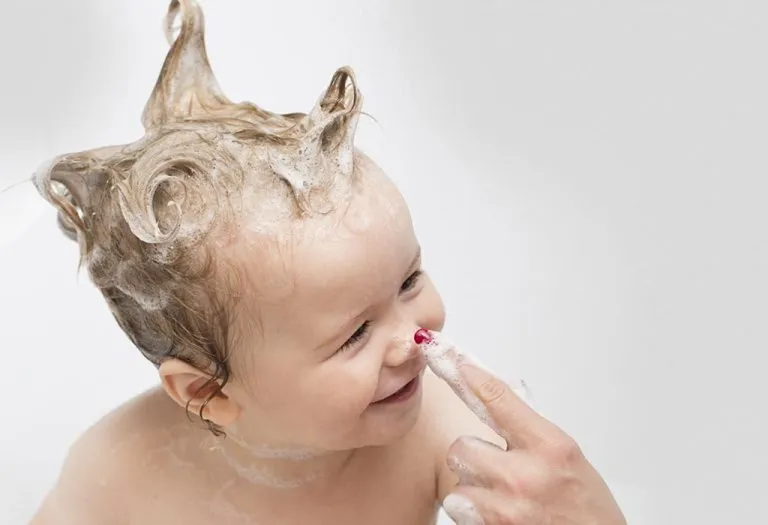Umbilical Cord Care: Everything You Should Know

It is truly a wonder that the belly button, an oft-neglected and insignificant part of the human body, is the route to providing nutrition to a baby growing inside its mother’s body! As parents, you should understand the cord’s function and the care that it needs till the time it is attached to your baby’s body. This will ensure that the umbilical cord does not create any health issues for the baby and falls off in a natural way. Through this article, you will learn all that you need to know about the cord, essential tips for its care, and ways to identify any infection it could contract.
What Is the Umbilical Cord?
The baby is born with the umbilical cord attached to its belly button, while the other end is connected to the placenta on the inner wall of the uterus. It is the placenta that provides the necessary oxygen and nourishment to the baby, with the umbilical cord acting as the passage for carrying nutrients and eliminating waste.
Structure & Function of the Umbilical Cord
In most cases, the baby umbilical cord is formed around the seventh week of pregnancy, and carries out the important task of providing all the essential nutrients to the foetus during its growth. The umbilical cord primarily consists of:
- A vein to transport oxygen and blood from the mother’s placenta to the baby
- Two arteries to send back de-oxygenated blood and other fluids from the baby to the placenta
The cord is secured safely in a sticky fluid cover known as Wharton’s jelly. For further protection, this is additionally covered by a thin membrane known as amnion. When the baby comes out of its mother’s womb, this cord is detached through a painless procedure, with one end clamped quite close to the baby’s body. This leaves behind a small stump that remains attached to the baby’s belly button for 7 to 21 days.
Remember, the umbilical cord is yellowish-green in colour upon birth and will turn black over a period of time before it undergoes a natural drying process. It is a given that you may feel unsettled by its unusual looks, but you can ignore it, as it will eventually fall off.
How to Take Care of the Umbilical Stump?
The infant umbilical cord stump needs to be cared for till the time it falls off on its own. Touching the stump and checking it often doesn’t help, although a precautionary visit to the doctor can be made if your newborn is fussier and crying more than usual and seems to be in pain. For first-time parents, here are a few tips for umbilical cord care at home:
1. Cleanliness is vital
The tiny stump may seem unclean and sticky at times. This signals that it needs to be cleaned with cotton or a wet cloth, followed by dabbing with a soft, dry tissue or cloth. Do not use alcohol or soap, as it may cause irritation to your tiny tot’s delicate skin. In any case, there is no need to hasten the healing process that works naturally!
2. Keep it dry
The key to ensuring that the healing process happens naturally is to ensure the stump remains dry at all times. Exposing it to air is also important, so make sure the diaper does not enclose the area. Cut off that portion of the diaper, or look for diapers with a low waist. Folding regular diapers around the navel area also works brilliantly. This will also help in avoiding contact with urine. Change wet diapers frequently, as the wetness may travel upwards toward the navel area.
3. Give a sponge bath
Till the time the umbilical cord stump is attached to your baby, resist the temptation of giving your baby a tub bath. Instead, opt for a quick sponge bath, as that will make sure the navel does not remain underwater for a long time. That baby tub you’ve bought can remain unused for a couple of weeks or so! Fan the area gently if you feel uncomfortable dabbing it with a cloth.
4. Clothe your baby sensibly
Make sure your baby is dressed in loose-fitting cotton clothing so that the stump remains unobstructed. The lesser the rubbing of clothes and the more the air circulation, the quicker the healing process. You may want to show off your little creation to the world by dressing your baby smartly, but it makes sense to hold off on the fashion parade for a while and allow the umbilical cord to heal properly!
5. Allow natural healing
There is a natural tendency amongst first-time parents to check if the cord has dried and will fall off at the earliest. Once it nears complete healing, you may feel tempted to pull it off, especially when you see it hanging by a tiny, weak thread. Resist the temptation, and let the natural process occur. It will fall off eventually.
When Does the Umbilical Cord Fall Off the Baby?
How long does it take the umbilical cord to fall off? Remember, it will take anything from one week to four weeks, provided it is tended to in the proper manner. Since it is a living tissue, the drying process has to be complete before it falls off. At times, a small amount of blood may be visible, or the skin may appear to be raw. This is normal and will heal on its own. In no time, the umbilical cord will be replaced by a cute little baby belly button. You can call your paediatrician if the stump takes more than four weeks to heal and fall off.
Signs of Umbilical Cord Infection
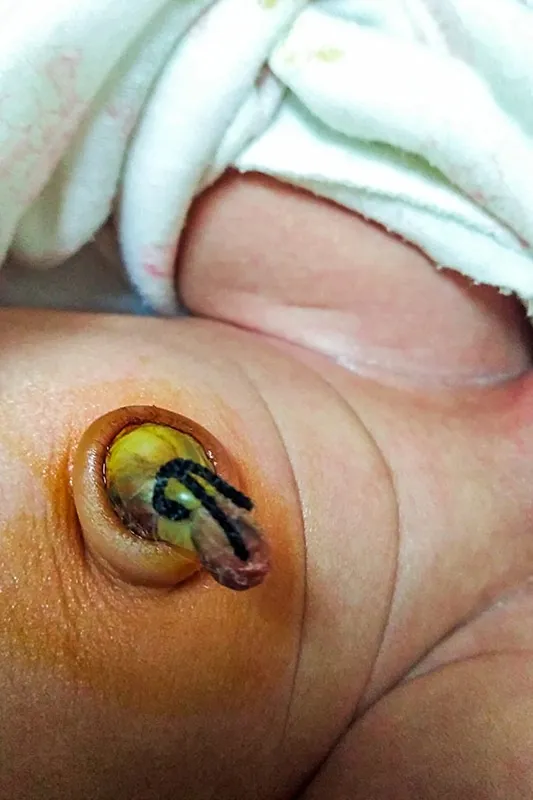
- The base of the cord turns red or swells.
- There is a foul-smelling discharge from the stump.
- The baby’s body temperature remains above normal.
- The baby’s abdomen feels swollen.
- There is a change in appetite.
- The baby displays general irritability.
Umbilical Cord Infection Treatment
Speak to your paediatrician immediately if you notice any of the above-mentioned signs. The doctor might prescribe antibiotics to clear the infection. Remember that constant bleeding can occur if the cord is pulled at, and this needs immediate medical attention.
Umbilical Granuloma in a Newborn
In a few cases, there is a possibility that the umbilical cord may form a pink coloured scar, which regularly oozes a yellowish discharge. This tissue is known as umbilical granuloma in a newborn, and should ideally heal on its own in no more than a week’s time. Pay attention to the infected area, especially if the condition is accompanied by symptoms like high fever, swelling of the abdominal area, reddening of the area, or tenderness. You should visit your paediatrician if the condition does not improve and seek medical attention without delay.
Umbilical Granuloma Treatment
To treat babies suffering from umbilical granuloma, doctors generally carry out the cauterization process on the infected area. Cauterization is a medical technique that burns tissue by applying silver nitrate to the area. This helps in closing off or removing the remaining part of the umbilical cord. This is quick and painless since the area does not have any nerve endings at all.
Another proven method used by doctors for umbilical granuloma treatment is tying a surgical thread to the base of the umbilical cord. This stops the blood supply to the area, thus quickening the drying of the cord and helping it to fall off in a natural way. None of these processes cause any pain to your newborn, and you can go ahead and ask your doctor to carry out the recommended procedure.
When Should I Call My Doctor?
You should call your doctor as soon as you notice any signs of infection, such as a swollen navel area, reddening of the cord, pain in the navel, bleeding, and a foul-smelling discharge. Apart from this, the following conditions need quick medical attention:
Omphalitis: When the navel area becomes unusually warm, red, seems tender, and is accompanied by a discharge, the newborn could be suffering from omphalitis. This bacterial infection needs to be taken seriously as it can be life-threatening, and needs immediate medical attention.
Umbilical hernia:
In this condition, a bowel tissue is seen protruding from the navel area. This happens primarily due to the strain your baby exerts on the abdominal area while it is crying. This creates a small hole in the surrounding muscle area. This condition can be treated easily by your doctor.
Another sign of an infection or pain in the umbilical cord area is continuous crying. This, too, warrants a call to the doctor. Keep the doctor informed if the stump refuses to fall off naturally after four weeks or more, as it may need to be cauterized or removed with the help of a surgical thread.
FAQs
1. How should I bathe my newborn baby while caring for the umbilical cord?
While your newborn baby is still saddled with the stump of his life-giving umbilical cord, it is advisable to give him a sponge bath over a full-fledged tub bath. A tub bath will result in keeping the navel area under water for some time, and this could increase the chances of an infection. The area has to be kept as dry as possible and hence, a sponge bath will suffice at this point of time. After the sponge bath, too, the umbilical cord and its surrounding area should be patted till it is completely dry, or fanned till it dries off. Be very careful around the affected area, and do not apply soap or any other cleaning agent that could irritate your tiny one’s delicate skin. Remember, the drier the navel area remains, the quicker is the healing process, thus helping the cord to wither and fall off in a natural manner.
2. What should I do after the umbilical cord falls off?
Wondering what to do when the umbilical cord falls off? The umbilical cord residue, or stump as we call it, generally falls off within 7 to 21 days (maximum of four weeks) after it has healed naturally. Once the umbilical cord falls off, there may be a tiny raw area you may see in and around the place, and this could also be followed by oozing of blood-filled fluids. However, in most cases, the cord falls off only after it has dried off completely.
3. What should I do if the umbilical cord is bleeding?
A few blood droplets around the umbilical cord are normal, and should not be alarming in most cases. However, you should watch out for active bleeding. You can confirm active bleeding if another drop appears right after one drop is wiped off. Pulling at the cord before it is completely healed can lead to this condition, and you should contact your paediatrician immediately.
4. Can a protruding belly button be compressed?
Mothers generally feel that the protrusion of a belly button is due to improper care or infection. To rectify this, many parents tape the navel area using a coin or a flat item. This is untrue, and cannot change the physical appearance of the belly button. It is advisable to let the appearance of the belly button be as it is, and focus on other essential aspects of bringing up your baby.
5. Is it normal for the umbilical cord stump to have a greenish tint before it falls off?
A greenish tint can sometimes occur as the stump dries out and begins to separate, but this is usually normal. However, if the area around the stump is red, swollen, or has a foul-smelling discharge, it could indicate an infection, and medical attention should be sought.
6. Can I apply baby powder or ointment to the umbilical cord stump to keep it dry?
No, applying baby powder or ointment to the umbilical cord stump is not recommended. These substances can trap moisture and increase the risk of infection. Instead, let the stump air dry naturally and avoid covering it with tight clothing or diapers.
The umbilical cord is crucial for the development of the baby in the womb, and needs adequate care when the baby is born. Being aware of the proper way to care for it will go a long way in ensuring that no problems occur for your little one.
References/Resources:
1. Umbilical Cord; Cleveland Clinic; https://my.clevelandclinic.org/health/body/umbilical-cord
2. Umbilical cord care: Do’s and don’ts for parents; Mayo Clinic; https://www.mayoclinic.org/healthy-lifestyle/infant-and-toddler-health/in-depth/umbilical-cord/art-20048250
3. Umbilical cord care; Pregnancy, Birth & Baby; https://www.pregnancybirthbaby.org.au/umbilical-care
4. Umbilical Cord Care; American Pregnancy Association; https://americanpregnancy.org/healthy-pregnancy/first-year-of-life/umbilical-cord/
5. Umbilical Cord Symptoms; Seattle Children’s Hospital; https://www.seattlechildrens.org/conditions/a-z/umbilical-cord-symptoms/
6. Umbilical Cord Care; American Academy of Pediatrics; https://www.healthychildren.org/English/ages-stages/baby/bathing-skin-care/Pages/Umbilical-Cord-Care.aspx
7. Umbilical hernia; Mayo Clinic; https://www.mayoclinic.org/diseases-conditions/umbilical-hernia/symptoms-causes/syc-20378685
Also Read:
Umbilical Cord Prolapse
True Umbilical Cord Knot
Nuchal Cord (Umbilical Cord Around Neck)
Was This Article Helpful?
Parenting is a huge responsibility, for you as a caregiver, but also for us as a parenting content platform. We understand that and take our responsibility of creating credible content seriously. FirstCry Parenting articles are written and published only after extensive research using factually sound references to deliver quality content that is accurate, validated by experts, and completely reliable. To understand how we go about creating content that is credible, read our editorial policy here.






